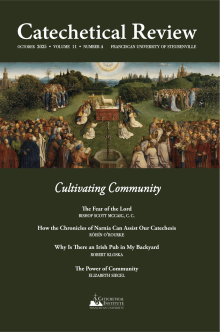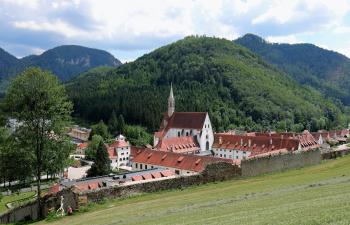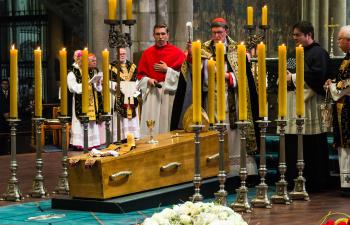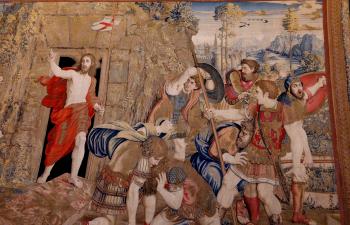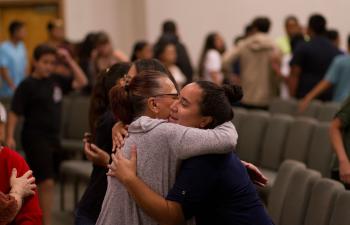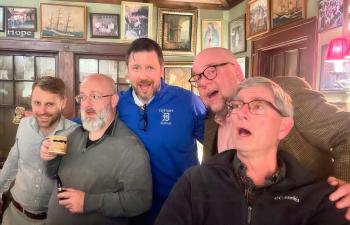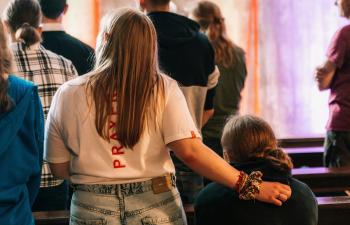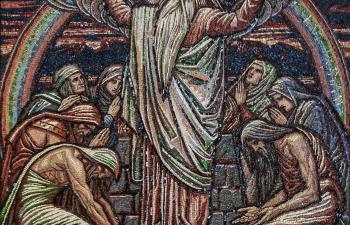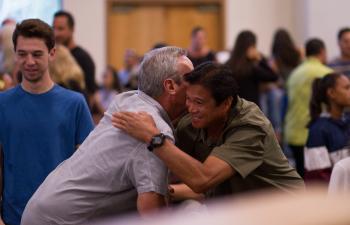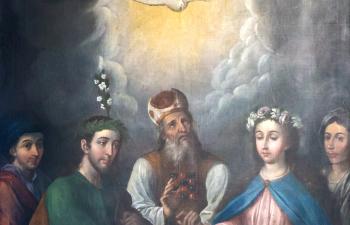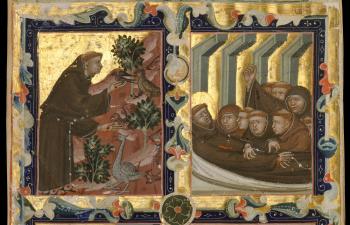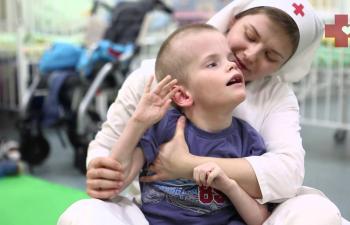A witness of faith and keeper of the memory of God; in experiencing the goodness and truth of the Gospel in his encounter with the person of Jesus, the catechist keeps, nourishes, and bears witness to the new life that stems from this, and becomes a sign for others. The faith contains the memory of God’s history with humanity. Keeping this memory, reawakening it in others, and placing it at the service of the proclamation is the specific vocation of the catechist. The testimony of his life is necessary for the credibility of the mission. Recognizing his own frailty before the mercy of God, the catechist does not cease to be the sign of hope for his brothers.
—Directory for Catechesis, no. 113[1]
The Memory of God in the Church
 The Directory for Catechesis (DC) contains beauty and wisdom for those of us who seek to foster renewal in our own catechetical efforts and in catechesis for our Church. Two essential directives are (1) to look to the catechumenal model, the OCIA, as an analogy for how to develop and grow an evangelizing and kerygmatic catechesis, and (2) to define a catechist as someone who, “in collaboration with the Magisterium of Christ and as a servant of the action of the Holy Spirit,” is a “witness of faith and keeper of the memory of God . . . a teacher and a mystagogue . . . an accompanier and educator” (DC 113). While there is much that can be discussed to further understand these qualities, let us focus on how each of us is a catechist according to the Lord’s will and plan for us, through our baptism and by the working of the Holy Spirit. Each of us, as a member of the Mystical Body of Christ, retains and awakens anew the “memory of God” in our lives—and has the opportunity to reawaken this memory in others.
The Directory for Catechesis (DC) contains beauty and wisdom for those of us who seek to foster renewal in our own catechetical efforts and in catechesis for our Church. Two essential directives are (1) to look to the catechumenal model, the OCIA, as an analogy for how to develop and grow an evangelizing and kerygmatic catechesis, and (2) to define a catechist as someone who, “in collaboration with the Magisterium of Christ and as a servant of the action of the Holy Spirit,” is a “witness of faith and keeper of the memory of God . . . a teacher and a mystagogue . . . an accompanier and educator” (DC 113). While there is much that can be discussed to further understand these qualities, let us focus on how each of us is a catechist according to the Lord’s will and plan for us, through our baptism and by the working of the Holy Spirit. Each of us, as a member of the Mystical Body of Christ, retains and awakens anew the “memory of God” in our lives—and has the opportunity to reawaken this memory in others.
We have been baptized into a living body, one that already retains the memory of God’s saving plan and action through history, understood as salvation history, culminating in the Paschal Mystery of Christ and now bearing fruit in our own time and place through the grace of the sacramental life of the Church. Just as the lives of the saints, our brothers and sisters in faith who have gone before us, bear witness and announce to us that the Lord has a loving plan for each of us unique to who we are and our own time, so we are invited to embark on the path of holiness set before us. We, too, are called to bear the good fruit of drawing others to the Lord by our witness. What is the “memory of God” that we are to keep, if not the saving action of the Lord in our lives? Our Holy Father Pope Leo XIV reflected on this in a recent catechesis: “Dear brothers and sisters, when will we too be capable of interrupting our journey and having compassion? When we understand that the wounded man in the street represents each one of us. And then the memory of all the times that Jesus stopped to take care of us will make us more capable of compassion.”[2]
When one asks us about our past, our families, or our history, we will often be able to recount details of people and events that are personal and real, that enable another to enter into our memory and, in a way, make it their own. For example, our children may not have known our grandparents, or even our parents, but they may have a memory of them from the stories that we share. Likewise, we have not personally lived through the events of the Old Testament or the New, nor the many events of the Church’s life through the past centuries; yet, we can carry the memory of our brothers and sisters in faith as if they were part of our immediate family.
The rest of this online article is available for current Guild members.
[1] Pontifical Council for the Promotion of the New Evangelization, Directory for Catechesis (USCCB, 2020), no. 113. Hereafter cited parenthetically in text as DC.
[2] Leo XIV, “General Audience, Cycle of Catechesis—Jubilee 2025,” Saint Peter’s Square, May 28, 2025.
[3] St. Augustine, Confessions, bk. X, chap. 27.
[4] CCC 1366: “The Eucharist is thus a sacrifice because it re-presents (makes present) the sacrifice of the cross, because it is its memorial and because it applies its fruit:
[Christ], our Lord and God, was once and for all to offer himself to God the Father by his death on the altar of the cross, to accomplish there an everlasting redemption. But because his priesthood was not to end with his death, at the Last Supper ‘on the night when he was betrayed,’ [he wanted] to leave to his beloved spouse the Church a visible sacrifice (as the nature of man demands) by which the bloody sacrifice which he was to accomplish once for all on the cross would be re-presented, its memory perpetuated until the end of the world, and its salutary power be applied to the forgiveness of the sins we daily commit.” [Council of Trent (1562): DS 1740; cf. 1 Cor 11:23; Heb 7:24, 27.]
[5] See Directory for Catechesis, no. 64: “Catechesis, aware that conversion is never fully accomplished but lasts a whole lifetime, teaches believers to discover that they are pardoned sinners and, drawing upon the rich patrimony of the Church, also provides specific penitential and formative paths that foster the conversion of heart and mind in a new way of life that should also be apparent from the outside.”
[6] Cf. Ezekiel 36:26: “I will give you a new heart, and a new spirit I will put within you. I will remove the heart of stone from your flesh and give you a heart of flesh.”
[7] Compendium of the Catechism of the Catholic Church, Appendix A, “Common Prayers” (Libreria Editrice Vaticana, 2005).
[8] Sacred Congregation for Divine Worship, The Roman Missal, 3rd typical ed. (USCCB, 2011), “The Concluding Rites,” 673.
Art Credit: Saint Patrick Catholic Church (Junction City, Ohio), Wikimedia Commons; Sign of the Covenant, Fr. Lawrence Lew, O.P., Flickr.com.
This article originally appeared on pages 101 - 109 of the print edition.
This article is from The Catechetical Review (Online Edition ISSN 2379-6324) and may be copied for catechetical purposes only. It may not be reprinted in another published work without the permission of The Catechetical Review by contacting [email protected]


